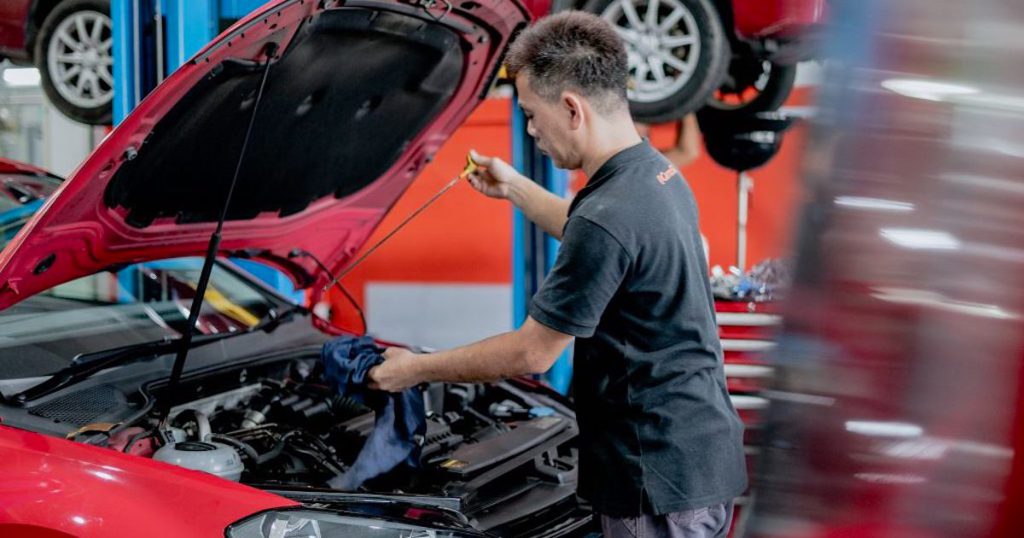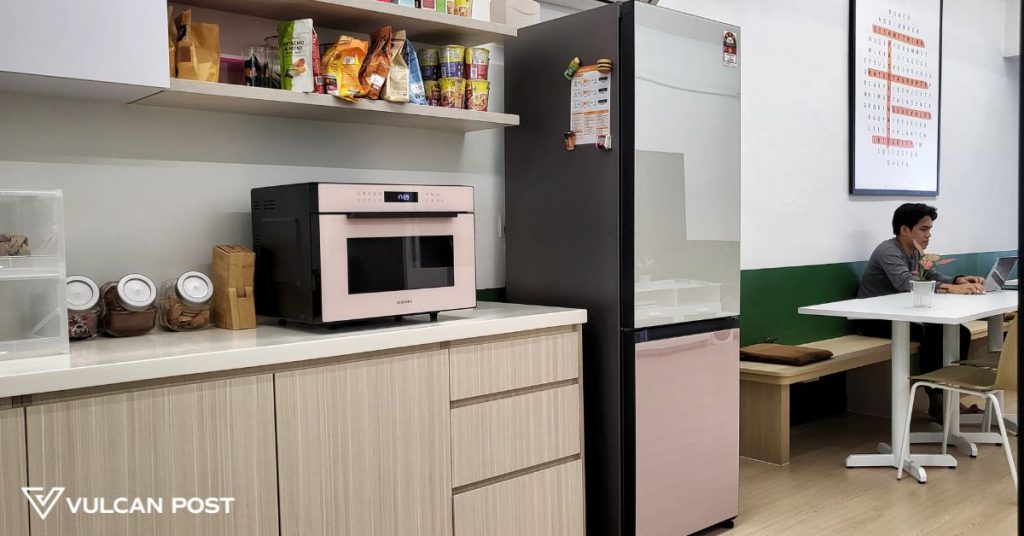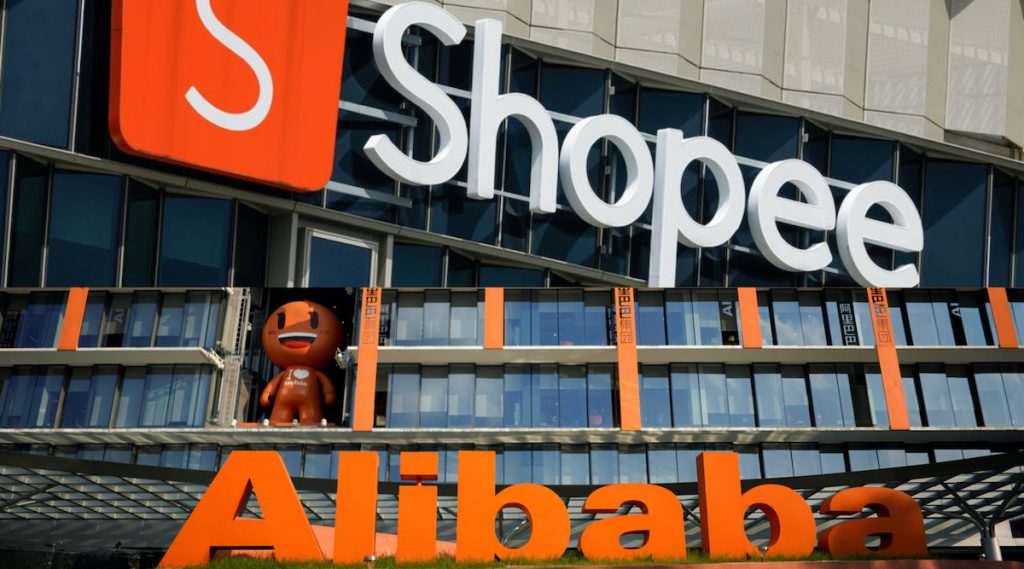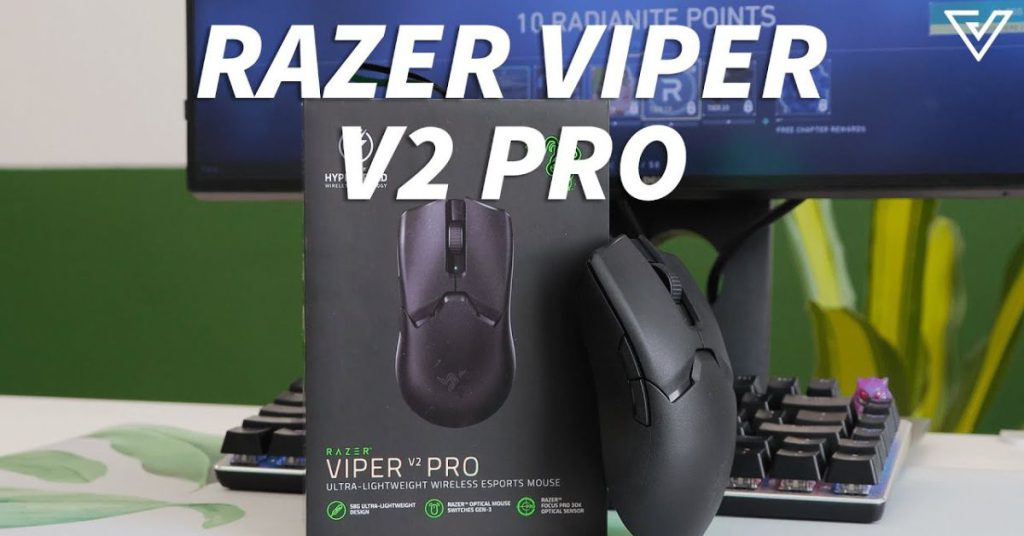Why motor workshops in S’pore need to collectively upskill to survive the rise of EV adoption

Given Singapore’s ageing vehicle population, local automotive workshops have recorded an increase in business over the past few years.
As of July 2022, over 20 per cent of cars in Singapore have been in use for nine or more years. There has also been an increase in people who have chosen to renew their Certificate of Entitlement (COE) on decade-old cars. This figure has risen from 7.7 per cent in 2007, to almost 21 per cent in 2022.
That being said, the coming years might not be quite as kind to motor workshops. Although people are holding onto their old vehicles for now, the fleet will eventually need to change.
Electric vehicles (EVs) appear to be the obvious choice for replacement. Singapore plans to phase out petrol and diesel vehicles by 2040 and as part of this plan, the Ministry of Transport has unveiled a variety of tax rebates to incentivise EV adoption.
In just the first five months of 2022, EVs have accounted for 8.4 per cent of all new car registrations. This is more than a two-fold increase compared to 2021, and a 20-fold jump compared to 2020.
This exponential growth puts motor workshops under pressure to expand their services and cater to an EV clientele.
Maintaining an electric vehicle
EVs have different needs as compared to internal combustion engine vehicles (ICEVs).
Since electric motors have fewer moving parts, they require less maintenance. There’s no need to clean valves, change oil, or replace spark plugs. In fact, automotive manufacturer BYD estimates that the annual costs for maintaining an EV can be as less as half that of ICEVs.
Regular maintenance of EVs primarily revolves around the tires. Since these vehicles tend to be heavier than their petrol and diesel counterparts, their tires tend to wear out faster. According to EV company Recurrent, the lifespan of regular tires could be shortened by up to 20 per cent when installed on an EV.

On the other hand, EVs go a lot easier on the brakes. In fact, their braking systems can last up to twice as long.
Unlike ICEVs, EVs rely on regenerative braking. This involves slowing down a vehicle by converting its kinetic energy into electricity, which can then be used to recharge its batteries. In contrast, ICEVs make use of friction braking, which generates heat and leads to faster wear and tear.
Apart from this, there are components such as the air conditioning and cabin air filters, which are fairly similar between EVs and ICEVs.
EV battery repair
Things get trickier when it comes to the batteries. Since they’re built to last anywhere between 10 and 20 years, batteries don’t require nearly as much maintenance as engines. However, there are cases of defects and malfunctions which must be accounted for.
As it stands, most motor workshops in Singapore aren’t equipped to deal with battery repair. In fact, there are plenty of EV manufacturers which don’t offer these services either.
“Many EV manufacturers currently have only one solution when a battery unit in their cars is defective or malfunctioning — [replace] the entire unit,” explains Porsche Asia Pacific’s Ridhwan Low.
However, replacing an entire battery unit incurs significant costs and also leads to wastage. Companies are forced to recycle or dispose precious materials such as lithium, which are found in very low quantities on the planet.

To avoid this, Porsche has been working on its own battery repair concept, which allows individual cells to be replaced.
Repairing individual components brings about considerable cost efficiencies for EV owners. Individual battery module repair also requires less time to complete, meaning less overall downtime for an EV owner. Finally and crucially, the environmental impact of repairing batteries is also much lower, as there is less wasted material that needs to be recycled.
– Ridhwan Low, Manager Aftersales Qualification, Porsche Asia Pacific
Porsche considers this to be an integral step in incentivising the mass adoption of EVs. For motor workshops, battery repair could be an area to pivot to as well, however, it requires a different skill set than repairing engines.
Overcoming the skill barrier
At the start of the year, Porsche chose Singapore as the site for one of its first high voltage repair hubs. The company is looking to train technicians in its battery repair process.
“As Porsche looks to decentralise high-voltage training to eight training locations worldwide, Singapore was chosen for its ideal location in the Asia Pacific region,” he adds.
The company is taking note of the increasing rate of EV adoption and equipping its aftersales team with the necessary skills to maintain premium levels of care.
It’s like open heart surgery, except on a car, with high-voltage safety precautions in place. Needless to say, this type of repair work requires an extremely high level of precision and training.
Porsche Asia Pacific is proud to have three High Voltage Experts in its Aftersales team, and looks to continue elevating High Voltage Technician training programmes in this region.
– Ridhwan Low, Manager Aftersales Qualification, Porsche Asia Pacific

Recently, the company also signed a memorandum of understanding (MOU) with the Land Transport Authority (LTA) to standardise and train technicians in EV servicing in Singapore. Porsche offers three levels of qualifications, with training administered through classroom- and web-based learning.
“Once all qualifications have been fully met, mechanics are allowed to work on the respective vehicle repair levels. To maintain a high level of knowledge retention, Porsche High-Voltage technicians must carry out at least one repair a year to maintain their qualification level,” explained Low.
This MOU also includes 20 other organisations — automotive companies, vehicle fleet owners, and government agencies — which are taking on the responsibility to train automotive technicians in EV maintenance.
As the push for sustainable transport continues, it remains to be seen whether Singapore’s motor workshops are up for the challenge.
Also Read: Adapt or die: What will happen to petrol stations once EV adoption is in full swing in S’pore?
5 scenarios that prove this Samsung BESPOKE Refrigerator & microwave oven are handy to have around

You never really appreciate what you have until it’s not there.
This thought was constantly running through my mind for the first three months after we moved into our newly renovated office, because all we had in our bare pantry was a kettle, water filter, and snacks.
In our efforts to stay frugal, my colleague, Claudia, and I would often make our own iced drinks to beat the afternoon heat. Without a freezer, that wasn’t possible.
Meanwhile, a few other colleagues would often bring homecooked food for lunch, and without a functional microwave or stove to warm them up, they could only eat food that had gone cold. Not to mention, a little less fresh than they’d prefer, since we also had no refrigerator.
Once Samsung’s BESPOKE Bottom Mount Refrigerator and Convection Microwave Oven with HotBlast™ 35L were delivered though, all of these inconveniences were alleviated, and more.
To explain how they’ve complemented our office in various ways, here are some scenarios that sum it up.
1. When you don’t have countertop space for a stove, steamer, microwave, air fryer, and grill, get you an appliance that can do them all.

Samsung’s microwave oven is one that works as a multifunctional kitchen appliance. For those with limited countertop space, this oven can replace a grill, steamer, air fryer, and of course, a microwave and an oven.
Some of the very first few things we cooked in this microwave oven that measures 52.8cm (L) x 40.4cm (W) x 48.1cm (H) were a frozen pizza and lasagna using the auto modes (more on that later).
The cooking process was convenient, and they turned out well. Their cheese was melted and crispy without their insides getting dried out.
Other than that, there is a mode that Samsung calls PowerGrill Duo, allowing you to enjoy evenly grilled foods.
“HotBlast™” refers to Samsung’s new microwave oven technology. With it, powerful hot air is blasted downwards, directly onto the food from 52 equally-distributed air holes.
What I liked most about this unit is the auto modes paired with a Quick Cooking Guide that comes inside the box.

It’s where you can find the right channels for cooking a roast or grilled chicken, homemade and frozen pizza, defrosting foods, steaming dumplings, air frying chicken fingers, or even proofing dough.
Via the oven’s pre-set cooking programmes, I can toggle between numbers to select a preferred setting and weight of my dish, to ensure it’s cooked well.
This allowed me to “set it and leave it”, allowing the Convection Microwave Oven with HotBlast™ to cook my dishes perfectly.

Basically, the oven makes a convenient tool for those who don’t have the skills or time to cook.
2. All those times you conveniently “forgot” to clean your crusty microwave oven for a long time because it was inconvenient? That’s no longer an excuse.
Since most of the oven’s heating components are exposed, cleaning is made easy by a quick wipe-down with a soft soapy cloth on the unit’s durable ceramic enamel material that’s also scratch resistant.

There are also no small and narrow crevices (where all the worst gunk tend to gather) that you have to painstakingly dig into to clean.
All the necessary oven accessories like its turntable, wire racks, grill, Stainless Steel Pro Steam Bowl, and Crusty Plate (essentially a pizza pan), are detachable and can be rinsed as well.

For any stubborn impurities with bad smells from inside the oven, Samsung’s manual suggests heating a cup of diluted lemon juice on max power for 10 minutes to deodorise the chamber.
3. When your leftovers start rotting, you don’t have to worry about bad odours circulating in the fridge before you have time to throw them out.
My boss once bought some food for herself that she split into a few portions: one to eat, one as leftovers to keep in a container in the fridge, and another in the freezer for a later date.

Busy with work duties and meetings, the leftovers packed in the refrigerator were kept for a little over two weeks and started going bad.
When we finally dumped the food out, we found that it had rotted, yet the pungent smells didn’t stink up the fridge. This was also true for the Musang King ice cream we kept in our freezer a while back.
It must be the refrigerator’s All Around Cooling system doing its work, as each compartment has separate cooling evaporators so odours don’t mix.
4. Forgetting about the refrigerated groceries you bought a month ago isn’t as punishing, because they’re likely still fresh enough to be edible.

Preserving food is the utmost basic function of a refrigerator, and the BESPOKE Bottom Mount Refrigerator does it effortlessly.
With a metal cooling plate on its rear wall, the fridge could maintain an optimal internal temperature to keep our food fresh.
This feature works by preventing the loss of cool air when the door is open, and it quickly restores any heat loss when it’s shut again.

We’ve had eggs sitting in our fridge for a month now, and upon checking, it looks like the fridge has been doing a good job at keeping them edible enough for my colleague to pair with his cup noodles.
As proof, we did a sight and smell test, and even a float test. Well, the eggs failed the float test, but didn’t have the slightest trace of funkiness, so we deemed them edible.
We say edible, because we wouldn’t necessarily recommend anyone hoard food or groceries for that long, especially those with sensitive guts.
Another colleague left some cut fruit sitting in the fridge for a couple of days, even over the weekend, but from sight alone, it still looked fine the following Monday despite not being kept in an airtight container.
(Alright, we can hear you judging our bad food safety practices in the office, but we’re working on them. Kind of.)
As a side note, ice freezes pretty fast in the freezer. Though Samsung claims that the fridge is able to make ice in four hours, testing this showed us that it’s able to freeze a fresh batch of ice in just three hours.
For those of us who make our own iced coffee in the office on a whim, at any time of the day, this feature is truly appreciated.
5. When you want to personalise your kitchen appliances to match the rest of your interior design, you’re given options.
As this is Samsung’s Bespoke series for its kitchen appliances, we got to choose the pastel pink option our oven and fridge came in. It also comes in a Glam White and pastel blue variant.
This is the brand’s way of allowing customers to furnish their kitchens in a way that syncs up with their individual tastes and design styles.

For the BESPOKE Bottom Mount Refrigerator, customisation is extended to the functionalities too.
You can use it as a single module with one full-length door (called the BESPOKE 1-Door Flex Convertible Refrigerator). If you want more storage space, you can combine two modules with either four doors, or two doors on opposite sides.
The doors of the fridge are reversible as well, simply by changing the hinges.
On top of having our microwave oven and fridge matching each other, they add a pop of colour to our office, much like the Aglaonema Pink indoor plants we have scattered around the space.
-//-
All in all, Samsung’s Convection Microwave Oven with HotBlast™ 35L and a BESPOKE Bottom Mount Refrigerator are good additions to have in any space.
In our less-than-skilled hands when it comes to the culinary arts, they have proven to be handy (pun not intended) whether it’s for minor cooking, reheating, or storing food (for irresponsibly long durations of time).
However, even for a more savvy home cook’s kitchen, they’re appliances that can complement one’s skills well.
Sans discounts, the base price for the Convection Microwave Oven with HotBlast™ 35L is RM1,959, while the BESPOKE Bottom Mount Refrigerator is RM5,499.
- Learn more about Samsung’s Convection Microwave Oven with HotBlast™ 35L here and BESPOKE Bottom Mount Refrigerator here.
- Read our other Samsung-related articles here.
Also Read: With our new Samsung 75-inch TV in the office, work meetings & movie nights just got better
All Image Credits: Vulcan Post
Alibaba loses the world to Shopee, as S’pore’s hit app now sells more than the Chinese giant

Disclaimer: Opinions expressed below belong solely to the author.
Almost exactly a year ago, I observed that at the trajectory it was growing, Sea’s e-commerce app Shopee would eclipse even the mighty Alibaba in international markets (i.e. everywhere outside of China) by 2022.
With the latest results published by Sea Ltd. yesterday, it has now become a fact.
For the quarter ending on 30 June 2022, Shopee reported revenues of US$1.7 billion, up by 51.4 per cent year-on-year versus US$1.57 billion (down by three per cent) submitted by Alibaba for all of its international businesses — Lazada, AliExpress, Trendyol and Daraz combined.

This is even more remarkable considering the difference in size of both companies — Alibaba and Sea Ltd. — as well as a much earlier entry into the international markets by the Chinese behemoth founded by Jack Ma.
Good news for all startups
It is also a worthy lesson considering the difference in strategy.
Sea has grown Shopee — which was founded in 2015 — from nothing, funding its growth with profits from a successful digital entertainment business, Garena.
Meanwhile, Alibaba pursued a multi-pronged approach. Its own retail marketplace, Aliexpress — established in 2010 — connected the world’s consumers to Chinese manufacturers, while a series of acquisitions allowed it to buy outright a seemingly dominant stake in several major markets: Turkey (Trendyol), Pakistan (Daraz) and Southeast Asia (Lazada).
And yet, it has fallen behind, having just appointed its fifth CEO at Lazada in five years, while Shopee keeps selling more and more.
It wasn’t all that long ago that we were still drawing comparisons between Shopee and Lazada, but now, the latter is three to four times smaller than the former, which handled almost as much (US$19 billion) in Gross Merchandise Value in the last quarter alone as Lazada did in the entire 2021 (US$21 billion).

This seems to be excellent news for all startups, as it shows that neither success in other countries, nor the depth of one’s pockets are a guarantee of dominance, while upstarts seemingly late to the party can still beat their much larger rivals in the end.
Victims of the KISS principle
I think Alibaba was blinded by its own heft and success within China. After all, at one point, it was compared to Amazon and it looked that given its strong position — right where almost everything in the world either is or can be manufactured — it would become a natural rival to the American giant.
As it turned out, Alibaba’s executives have underestimated the challenges of international competition.
Because of that, they seem to have also forgotten the basics of the KISS principle — “Keep It Simple, Stupid!”.

You could observe their first sin right in the chapter above, where I listed out four different international businesses that they own and operate abroad. Unlike in the case of Shopee, their operations are disjointed and there’s no single overarching entity that would effectively control them.
There’s also no single brand, no single identity, no single group of people who would understand what the company is and how it should market itself.
Instead, Alibaba has sought a shortcut into market share by acquiring major local/regional players, believing it was enough to enjoy future dominance. Now, it has several businesses it doesn’t quite know how to run and no brand it could base its international growth on.
Its relative failure is further reinforced by the rather poor handling of AliExpress, which has been around for over a decade now and yet, was still caught off its guard by new VAT requirements in the EU area, despite knowing of them ahead of time.
According to the new regulations, foreign businesses no longer enjoy VAT-free sales on small e-commerce orders and have to collect and pay the tax, which has led to price hikes for end consumers and in turn, reduced demand.
You may be thinking that it’s an extraneous condition that hurt demand and that Alibaba could do little to counteract it. However, somehow, it doesn’t seem to pose a problem for Shopee, which has established itself in Poland, recruiting local suppliers and running domestic advertising campaigns, promoting the platform in the new European market.
Alibaba’s leadership seems to have believed that there’s no need to attract local producers when you have so many suppliers in China, and it has now hurt their sales — as they admitted in their quarterly report published two weeks ago, blaming the slide in revenue on the new VAT rules.
Can Alibaba bounce back?
Most likely not — because it is, fundamentally, a China-first company. Domestic market is so huge that the business can clock tens of billions of dollars in profits each year, without worrying about adapting to foreign markets, which are often smaller than a single province or even a city in China.
Shopee, on the other hand, is international by design. Launched in Singapore, which is way too small to build a multibillion dollar enterprise, it had to navigate complexities of cross-border operations from the outset.

It doesn’t have a single, large market to lean on. To grow, it has to keep adding new ones, particularly those which may be underserved by bigger enterprises like Amazon.
But you can also sense an admission of defeat in Alibaba’s own plans. Last year, it (seemingly) boasted how it plans to grow Lazada’s GMV to US$100 billion by 2030. However, Shopee is likely to handle US$80 billion this year, and may reach three digits next year or the one after — six or seven years before its most direct competitor.
In other words, it doesn’t even want to put up a fight — just keep the international businesses on the side, and perhaps continue with buying itself more market share in the future, rather than creating a brand that could win the world over.
But, as Einstein reportedly quipped, doing the same thing over and over again expecting different outcomes is the definition of insanity.
Featured Image Credit: Reuters
Also Read: Alibaba’s global e-commerce in trouble as Shopee is set to beat it by up to 30% this year
[WATCH] We break down how Razor’s RM749 gaming mouse differs from its predecessor

The Razer Viper V2 Pro is marketed as an esports mouse that’s great for just about any user, though it’s sold with a higher price tag to match.
As the successor to the Razer Viper Ultimate, the Viper V2 Pro has a lot to live up to.

We tried the black model that’s coated with a matte finishing, its scroll wheel furnished with a rubberised texture for a better grip.
Weighing at 58g, it’s 16g lighter than the previous version. But to achieve the lightweight build, Razer removed most of the well-known Viper Ultimate’s features.
Here are 5 features that were excluded in this gaming mouse.
Removed feature #1: There’s no RGB

Razer Viper V2 Pro does not come with built-in RGB lights. It may not be a big issue though, as it won’t affect your gaming performance.
But this could be a downside for those who are in it for the aesthetics of their PC build.
2. Removed feature #2: No built-in rubber grip
Compared to the Ultimate model, the Viper V2 Pro model has no fixed rubber grip attached to the mouse.
This could be a plus for those who don’t like having a rubberised texture on the side of their mouse.

For those who do, though, Razer provides a set of rubber grip stickers inside the box.
Removed feature #3: Not suitable for left-handers
This gaming mouse is no longer suitable as an ambidextrous mouse as compared to its predecessor.
The two thumb buttons on the side of the Viper V2 Pro are placed only on the left, making it less usable for left-handed users, who can’t maximise its full features.

Removed feature #4: Less accessible DPI button
Located under the mouse, the Dots Per Inch (DPI) button also functions as a power button.
This could be a hassle for gamers who like to change their DPI settings while in-game, as they would have to lift the mouse up to adjust the settings.

Pressing it once changes the DPI mode, while pressing and holding the button for three seconds would switch the mouse off or on.
Removed feature #5: No wireless charging
Unlike its predecessor, The Viper V2 Pro does not come with an included magnetic wireless charging slot.

But one of the advantages of this mouse is its battery life. It can last up to 80 hours of usage on a single charge, making it convenient for long hours of gaming.
You could also use the mouse can wirelessly or wired with its USB-C cable that comes in the box.
Though plenty of features from Razer’s Viper V2 Pro have been taken out when compared to the Ultimate model, it does sport a couple of upgrades.
Upgrade #1: Higher sensitivity

The Viper V2 Pro is equipped with an upgraded sensor, the Razer Focus Pro 30K.
You can set your mouse sensitivity as high as 30,000 DPI. The improved sensor even allows you to use the mouse on glass surfaces.
This, combined with its light weight, make for a really manoeuvrable mouse, ideal for fast-paced games like first-person shooters.
Upgrade #2: 90 million click lifespan
The Viper V2 Pro is certified with the latest Optical Mouse Switches Gen-3, which enables you to have a 90 million mouse click lifespan with no double-clicking issues.
If your setup is only missing a good mouse, this just might help you win more games.
-//-
Despite its lightweight build and lack of features when compared to the Viper Ultimate, the Viper V2 Pro is priced at RM749, significantly higher than its predecessor, which ranges around the RM600 mark.
But for those who aren’t into the RGB aesthetics and prefer a sleek-looking device, this might just be the mouse for you.
To see the Razer Viper V2 Pro in action, check out the video below:
Also Read: Here’s a quick guide on how to get a RM50 voucher by subscribing to foodpanda’s pandapro
Best of both worlds: TikTok combines shopping and social media, joins e-commerce wave

The e-commerce scene in Southeast Asia has grown considerably in the past few years, particularly due to the Covid-19 pandemic that has forced everyone to stay home as much as possible. As such, companies like Shopee, Lazada, and Amazon have seen strong growth for the past two years.
And now, a new challenger has appeared, in the form of social media giant TikTok.
While TikTok is primarily known as a social media platform for short videos, the platform is now dipping its toes into something entirely different: e-commerce.
Just last week, the platform announced the launch of its e-commerce venture, TikTok Shop.
Over the past week, users of the app may have seen live videos of sellers promoting their wares. This is not a coincidence — TikTok has spared no expense in trying to ensure the success of their e-commerce arm.
So what will TikTok Shop offer for the e-commerce industry in Singapore, both for sellers and buyers?
Why is TikTok joining the e-commerce industry?
TikTok has primarily been known as a social media platform, but according to the company, social media is also one form of word-of-mouth marketing.
With over 18 billion views and counting on #TikTokMadeMeBuyIt, it is clear that TikTok’s take on digital word-of-mouth marketing is here to stay. TikTok Shop presents the ultimate convergence of content and commerce with unique shoppertainment experiences for all — where we aim to empower businesses of all sizes to authentically and impactfully engage with our TikTok community and enhance our users’ experience to discover and engage with what they love.
– Ng Chew Wee, Head of Business Marketing in APAC

With the e-commerce market volume in Singapore expected to reach US$11.45 billion by 2025, TikTok is hoping to tap on the growth of this industry.
That being said, TikTok is not exactly entering an industry that is untapped. Platforms like Shopee, Lazada, and Qoo10 count monthly visits to their websites in the millions, so new entrants like TikTok must compete with these established brands to succeed.
Empowering local brands and merchants
One feature of TikTok Shop that the company seems to be banking on is its integration of shopping and social media.
“The beauty of TikTok Shop is that it is directly integrated into TikTok to offer a seamless consumer journey,” said Ng Chew Wee, TikTok’s Head of Business Marketing in APAC.
“Online shopping habits are evolving, and consumers are expecting more from brands today before making their purchases. According to our recent study, more users today want branded content to be fun and uplifting.”
The main target audience for TikTok’s new e-commerce venture are local brands and merchants, especially small and medium businesses.
According to Ng, TikTok Shop is meant to help these businesses grow their social presence and drive tangible business results by allowing them to showcase their creativity and build authentic connections with shoppers.
As such, TikTok Shop is designed not just for shoppertainment to be possible, but for it to function as the main method in which sellers get customers.

However, this functionality is not necessarily unique to TikTok Shop. E-commerce sites like Shopee and Lazada have also been experimenting with shoppertainment, allowing sellers to host live shopping events and interactive livestreams.
With this in mind, what is TikTok doing to attract sellers to their platform?
Building a positive atmosphere for buyers and sellers
To encourage sellers to get on board, the platform is offering the TikTok Shop Affiliate Program, as well as the TikTok Shop Seller University.
The Shop Affiliate Program connects creators with sellers through commission-based product marketing, allowing sellers to push out engaging creator-led content, while the TikTok Shop Seller University helps sellers manage aspects of their business, including content creation, livestream production, and store operation.

On top of this, TikTok is currently offering new sellers a waiver of this commission. For now, sellers only need to pay a one per cent payment service fee.
At the same time, TikTok will also be absorbing some shipping costs, and providing sellers with discount vouchers to lure customers.
TikTok Shop will also feature after-sale solutions to support sellers in handling any after-sale disputes, and enable customers to resolve conflicts with sellers.
With Singapore’s e-commerce scene booming, TikTok has undergone a unique journey into the industry — starting out as a social media platform before diversifying, and they seem to be learning well from the other e-commerce giants in the region.
While only time will tell how successful this venture into e-commerce will be, their e-commerce venture seems a natural extension of their mainstay of social media.
As Ng argues, “TikTok’s effect on shopping trends is a powerful cultural phenomenon, one that arose organically, as people flocked to our platform to express themselves, exchange opinions, connect, and learn from each other.”
Featured Image Credit: Pandaily
Also Read: Grab turns 10 – launches GrabMerchant and GrabScholar schemes, targeted at SMEs and students

